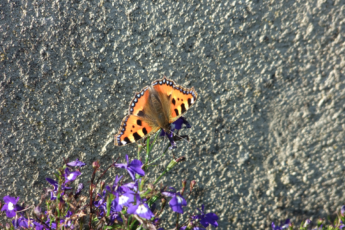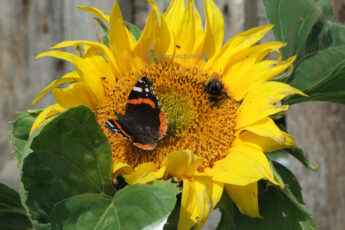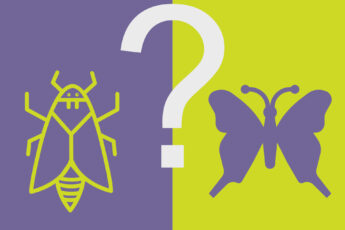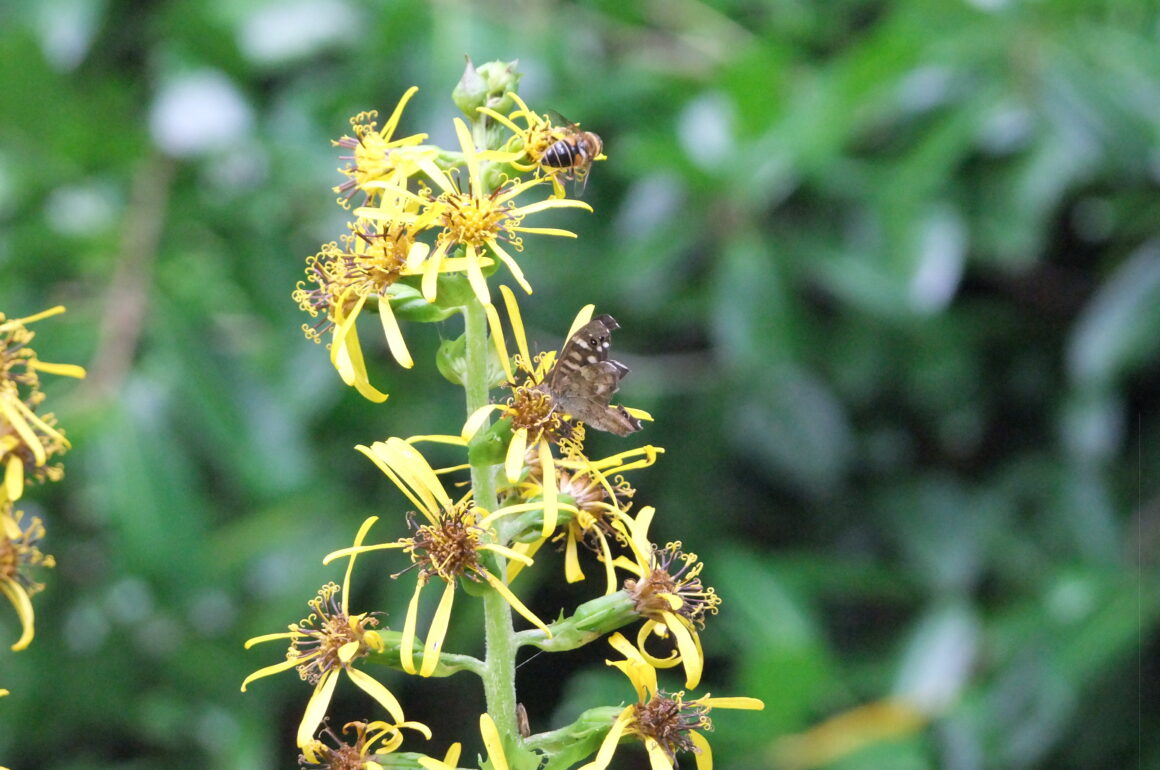
If you google how to create a butterfly garden, one of the first things it suggests is a garden in full sun. We know that butterflies are cold blooded and so need the sun to raise their body temperature, which is great for those of us who have gardens which are sunny for at least 6 hours a day!
However, what if you have a garden that is surrounded by trees or tall hedges that cover most of your garden in shade? Are you destined to never have pollinators in your garden? Will butterflies just flutter past to land in your neighbour’s garden instead?
The good news is that you can still attract butterflies and other pollinators to your garden even if it doesn’t get a lot of sun – you just have to think a bit more about what kind of light you have and research the types of native plants that like your kind of light whilst also benefitting butterflies.
What type of light?
So, what do I mean by type of light? There are different types of shade, so you need to know which kind you have in your garden.
For example, my own garden has full sun on most of it, but there is one particular area which only gets a bit of sun first thing in the morning and in late afternoon/early evening. The rest of the day it’s in partial shade, due to the trees and the roof of our house.
You could have areas which have dappled shade from trees, hedges, or tall bushes, or dense shade due to buildings.
All these different shady areas will appeal to different plants and therefore attract different butterflies.
Which butterflies?
To start with, think of any woodland areas local to you – which butterflies have you seen in that location? Research what kind of habitat those butterflies prefer – is this something you can replicate in your garden?
There are a lot of woodland butterfly species that will be attracted to gardens with dappled, shady areas. Many of these butterflies also prefer to breed in the shadier areas. The Silver-washed Fritillary for example, will feed on flowers such as Bramble, whilst its caterpillars love to eat Common Dog-violet which is found on the woodland floor.
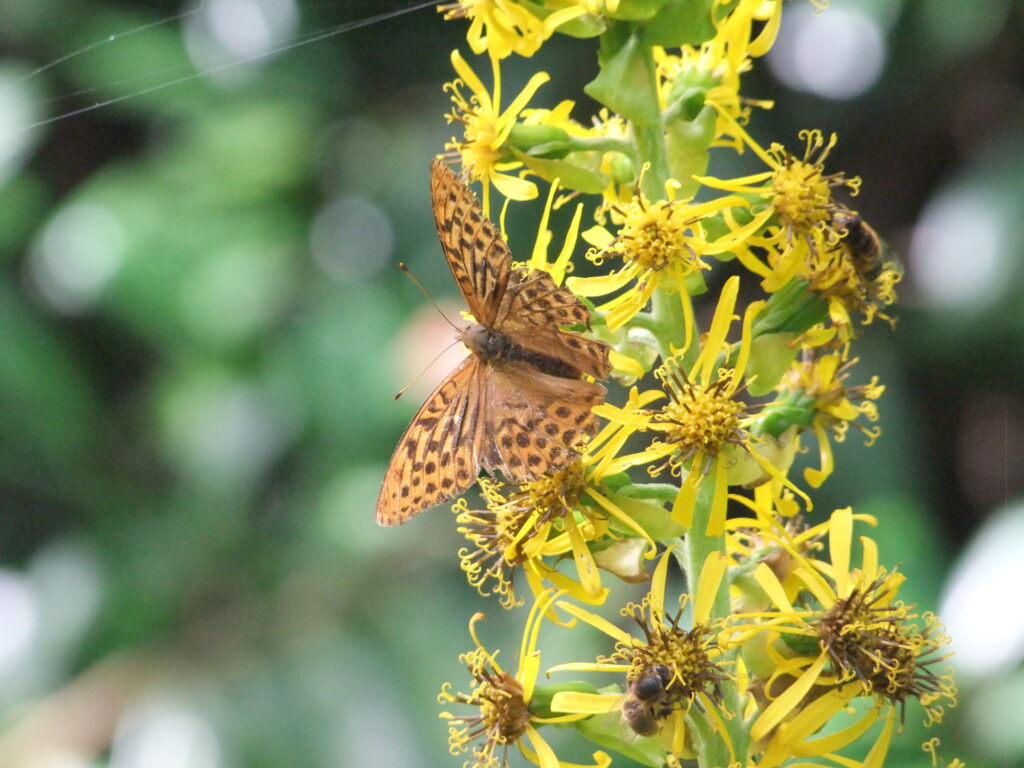
Other woodland butterfly species include the Speckled Wood which loves partially shaded woodland with dappled sunlight, so if it is found in your region then it will more than likely visit gardens that have dappled, shady corners.
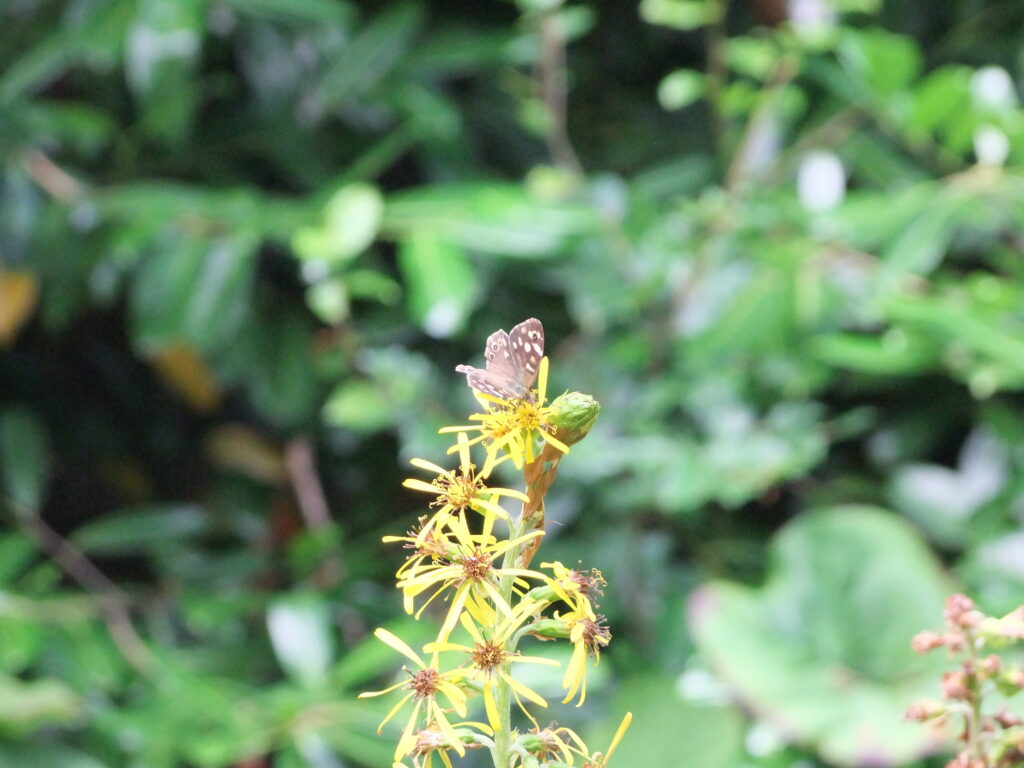
The Ringlet is another species which prefers woodland glades and damp grassland with partial shade – it also likes to fly in dull weather when most other butterflies are inactive.
They are just a few examples of butterflies which prefer partially shaded gardens, look into which species are native to your area and you might be surprised at the number of ones that prefer shady locations rather than full sun.
Which plants?
So, now you have an idea of the butterflies you could attract to your shady garden, it’s time to choose the plants they like. Again, think back to your local woodland where you have seen butterflies – which plants did the butterflies tend to land on?
By planting a mixture of shade tolerant, woodland flowers, not only will you have a blanket of colour in the Spring, but they will also attract pollinators. Try to pick plants which flower at different times of the year – ones that flower early March will benefit any pollinators coming out of hibernation, whilst plants that are late bloomers are vital for butterflies that are filling up their reserves for the coming winter.
If you have a shaded garden due to a lot of trees this is another benefit to butterflies as many species rely on trees as a food source for their caterpillars. Also, if they are fruit trees then leave any fallen fruit on the ground as some of the woodland butterflies are more attracted to rotting fruit and tree sap than flower nectar.
The table below shows a summary of a few examples of shade tolerant plants which attract pollinators, you can read a fuller description underneath the table.
| Plant Name | Position | Flowering Months | Pollinators |
| Bugle (Ajuga reptans) | *May – Jun – Jul |  | |
| Red Campion (Silene dioica) | Apr – May – Jun – Jul |  | |
| Primrose (Primula veris) | *Mar – Apr – May |  | |
| Cowslip (Primula veris) | Apr – May – Jun |  | |
| Forget-me-not (Myosotis sylvatica) | Apr – May – Jun |  | |
| Honeysuckle (Lonicera periclymenum) | Jul – Aug – Sep |    |
* Please note due to the diverse varieties of each plant flowering times may vary.
Bugle (Ajuga): This hardy plant grows well in partial to full shade and is perfect for ground cover in shady borders. It has nectar/pollen rich flowers making it attractive to bees, butterflies, moths and other pollinators.
Red Campion (Silene dioica): This wildflower has delicate pink flowers which attracts bees, butterflies and moths. It grows well in partial shade and is often found growing wild in woodlands.
Primrose (Primula vulgaris): I think most people at some point in their life, will have seen primroses growing underneath hedgerows and in woodland in early spring. Pollinators love it as it is an early bloomer, and it’s also a food plant for caterpillars of several moth species. Primroses love to grow in damp shady areas, and whilst they are beneficial to pollinators, they can be toxic to dogs, cats and horses.
Cowslip (Primula veris): Cowslips grow well in a group and in partial or dappled shade. They attract bees, butterflies, moths and other pollinators with their funnel shaped yellow flowers.
Forget-me-not (Myosotis sylvatica): This hardy plant will give a carpet of blue flowers from April to June. It grows well in dappled or partial shade and is good at attracting bees, butterflies, moths and other pollinators. It is also a food source for caterpillars.
If you have a wall in partial shade, try planting a climber such as Honeysuckle (Lonicera periclymenum), which grows best in part-shade. The flowers are heavily scented and are attractive to butterflies and bees through the day, and moths at night. It is also favoured by caterpillars as a food source. Although it is attractive to birds, bees, butterflies, moths and other pollinators, its foliage and fruit are toxic.
The above is just a small sample of plants that can grow in full or partial shade, take the time to research which species of native plants would grow well in your own garden.
So, as you can see just because your garden isn’t a sun trap, it doesn’t mean you can’t attract butterflies and other pollinators to it. With a little bit of planning you’ll also soon enjoy seeing these beautiful winged insects.

